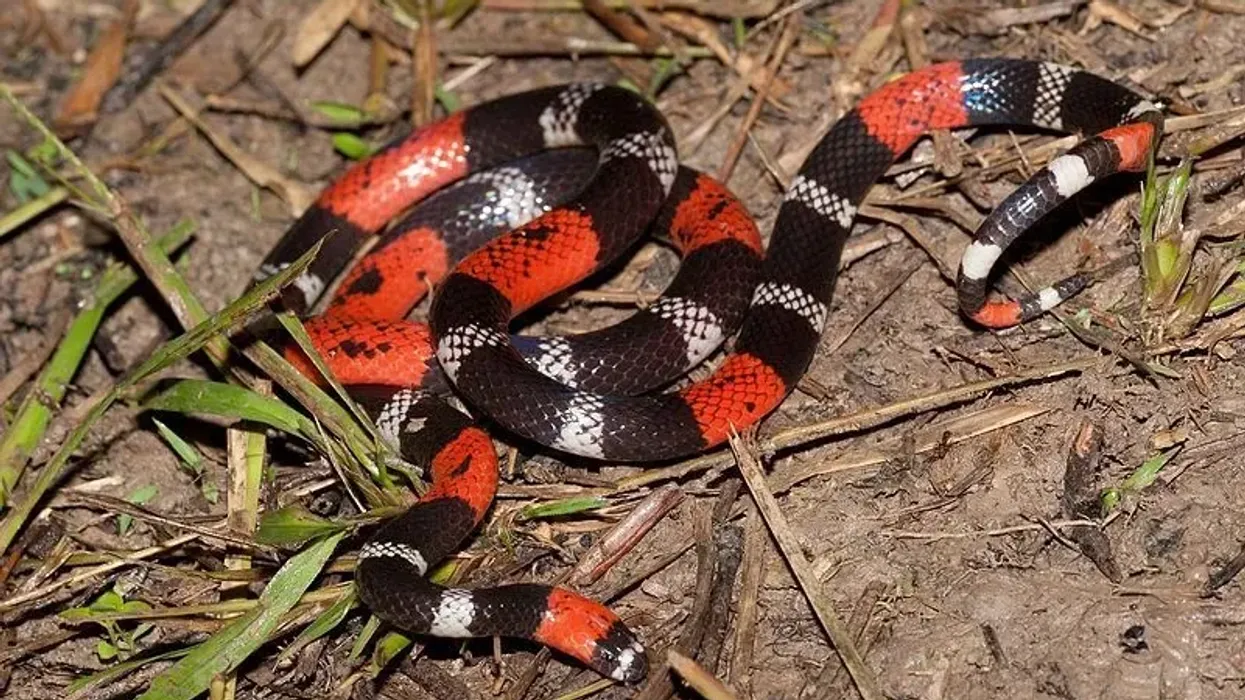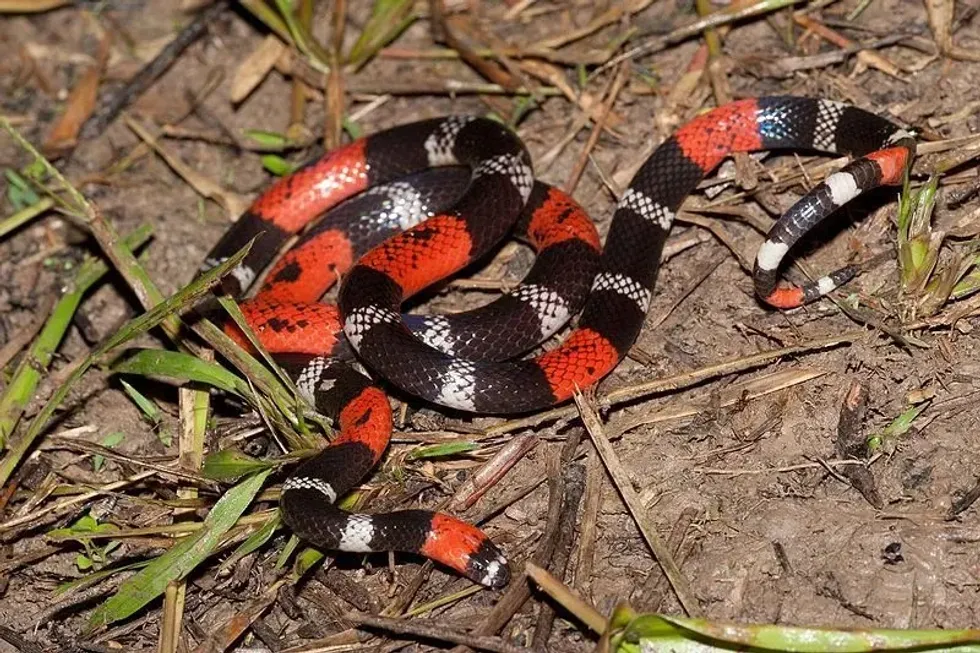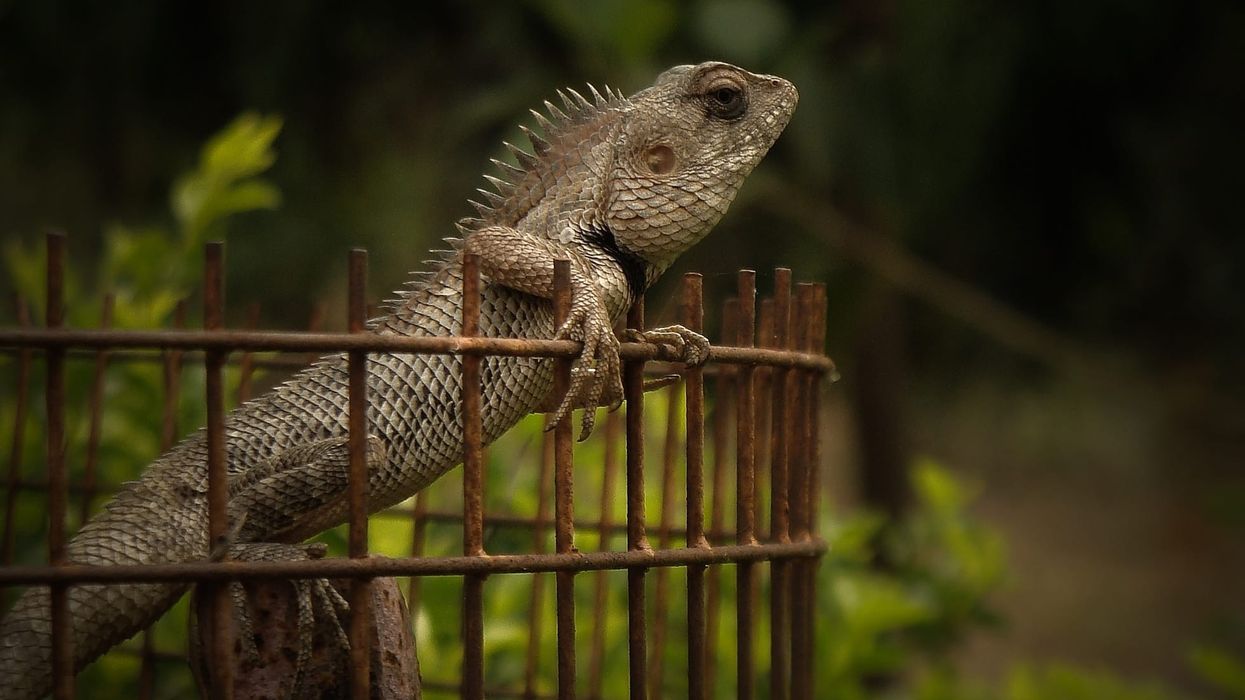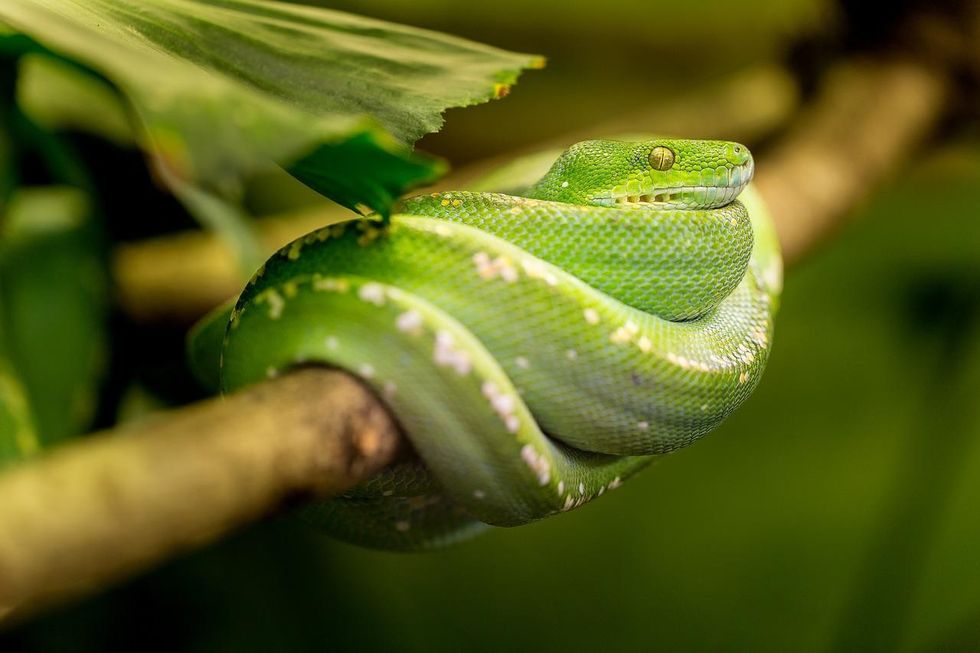The South American coral snake, Micrurus lemniscatus, is a brightly dark-colored thin snake with a black tail. They have a wide range of habitats and are native to South America. They are seen in Venezuela, east of Peru, Trinidad, north of Bolivia, Colombia, and Florida. They are categorized among the New World coral snakes.
They spend most of their time in the humid low-level lands of gallery forests and open savannas. They have a poisonous neurotoxin named Micrurus fulvius, which can cause neuromuscular damage in vertebrates. However, antivenom Micrurus fulvius helps to get rid of their venom if treated on time. They are carnivores and prey on small snakes, lizards, and frogs.
They are very secretive. The females are oviparous.
They have red, black, yellow, and white rings on their bodies. They are known to be less aggressive towards humans except when it comes to their territory.
There are very few articles available with regard to their conservation status, but as these are endemic to their native place and are often seen in their habitat, so they are concluded to be of Least Concern.
Learn some interesting facts about other snakes such as rattlesnakes and the vine snake.
South American Coral Snake Interesting Facts
What type of animal is a South American coral snake?
The South American coral snake is a long, thin-patterned snake with a black tail. They are one of the venomous snakes and are scientifically known as Micrurus lemniscatus. Some of these species have yellow while others have white rings.
What class of animal does a South American coral snake belong to?
The South American coral snakes belong to the class of Reptilia and the family Elapidae. They are categorized among the New World coral snakes, genus Micrurus. There are two species of New World coral snakes, Micruroides and Micrurus.
How many South American coral snakes are there in the world?
The exact number of these South American coral snake species is not estimated and is unknown globally.
Where does a South American coral snake live?
The South American coral snake, Micrurus lemniscatus, is endemic to the native land of South America and has a wide range of habitats. They are seen in Venezuela, east of Peru, Trinidad, Ecuador, Paraguay, and north of Bolivia, Colombia. Most of the other coral snakes are found in northern parts, including the whole of Florida.
What is a South American coral snake's habitat?
Generally, most of the coral snakes are found near pines and scrub oaks, but the South American coral snakes' habitat is such that they spend most of their time in humid, low-level lands of gallery forests and open savannas. They can also be spotted near flooded plains with low-level land and humid artificial habitats with water sources.
They are even found in seacoast areas. They have a wide range of habitats.
Who do South American coral snakes live with?
Most of the South American coral snakes, Micrurus lemniscatus, are solitary and are very elusive of their same species. They are territorial and are only seen in pairs during the breeding season.
How long does a South American coral snake live?
The South American coral snake, Micrurus lemniscatus, can live up to seven years.
How do they reproduce?
The South American coral snake, Micrurus lemniscatus, is active among reptiles during the night and is nocturnal. The female lays around 20 eggs once a year.
They are very aggressive with regard to their territory and are territorial in their behavior. They dig in soft soil and mostly settle down in pairs or alone. On the basis of some general articles, it is known that these species breed during the summer season according to their habitation.
What is their conservation status?
Not many articles are available in the context of their conservation status. They are found mostly in numbers in their native places and are of Least Concern among reptile species. They are not rare.
South American Coral Snake Fun Facts
What do South American coral snakes look like?
The South American coral snake, Micrurus lemniscatus, is a brightly dark-colored thin snake with a black head and nose at the start. The rest of the head is red in color.
They have thin white circles around their dusky brown small eyes. They have many white, red, and black rings throughout their long, thin bodies. The tail of these American species is also black in color with a white ring in between.
They are basically known to have a pattern body with fixed fangs. In many coral snakes, the red, yellow and black ring pattern body is also evident than the red, white, and black ring pattern body.
How cute are they?
No, they are not cute. Though they are brightly colored reptiles with a red, yellow, white, and black pattern on their bodies, they are venomous and one must avoid their acquaintance.
How do they communicate?
There is not much evidence available in the context of their communication, but they are territorial. Many instances of these species making pop sounds by releasing air from their cloaca are evident. This is done when they sense some danger or want to mate with their female counterpart.
How big is a South American coral snake?
These South American coral snakes are 23.6-57 in (60-145 cm) long in length.
How fast can a South American coral snake move?
The Micrurus lemniscatus's moving speed has not been recorded or estimated, but in general, most coral snakes move fast in order to prey on their food.
How much does a South American coral snake weigh?
The Micrurus lemniscatus weighs around 32-80 oz (0.9-2.26 kg).
What are the male and female names of the species?
There is no such specific name given to the male and female species of this black-tailed reptile species.
What would you call a baby South American coral snake?
The babies of the South American coral snake are called hatchlings or snakelets.
What do they eat?
These reptile species, like other venomous and non-venomous snakes, eat small snakes such as blind snakes, worm snakes, lizards, frogs, small birds, and invertebrates. First, they bite their prey in order to kill them with their venom and then swallow them slowly.
Are they poisonous?
Yes, they are poisonous. The Micrurus lemniscatus are New World coral snakes that are venomous snakes and have a poisonous neurotoxin named Micrurus fulvius, which can cause neuromuscular damage in vertebrates. Their venom is among the second most deadly venoms after black mamba.
The venom spreads slowly almost for 13 hours. No deaths have been reported in South America. An antivenom named antivenin helps the person to recover quickly.
Would they make a good pet?
No, they would ideally not make good pets because they are venomous, but no major harm to humans has been recorded. It is better to leave them in their natural surroundings as their bite can cause pain and can kill the person if delayed.
Did you know...
Coral snake bites are almost 5% of total snake bites in South and Central America.
There are four subspecies of the South American coral snake. Micrurus lemniscatus carvalhoi, Micrurus lemniscatus fronifasciatus, Micrurus lemniscatus helleri, and Micrurus lemniscatus lemniscatus.
How do you identify a coral snake?
The coral snakes are very secretive and can only be identified on the basis of their pattern body with white, black, red, yellow, and orange color rings. The coral snake has both Old and New World snakes. The New World snakes are further categorized into Micruroides and Micrurus.
Comparison with other coral snakes
The South American coral snake and the Arizona coral snake are New World venomous snakes. Both species have thin patterns on their bodies with colorful rings.
Arizona coral snakes are native to central-south Arizona and are mostly found in rocky areas, whereas, the South American coral snakes are found in soft and moist sandhills and gallery forests.
The venom of the Arizona coral snake is most often compared and considered similar to the venom of a cobra. The South American coral snake face is different from the Arizona coral snake.
Here at Kidadl, we have carefully created lots of interesting family-friendly animal facts for everyone to discover! Learn more about some other reptiles from our sea snake fun facts and banded sea krait interesting facts for kids.
You can even occupy yourself at home by coloring in one of our free printable color by number snake coloring pages.










